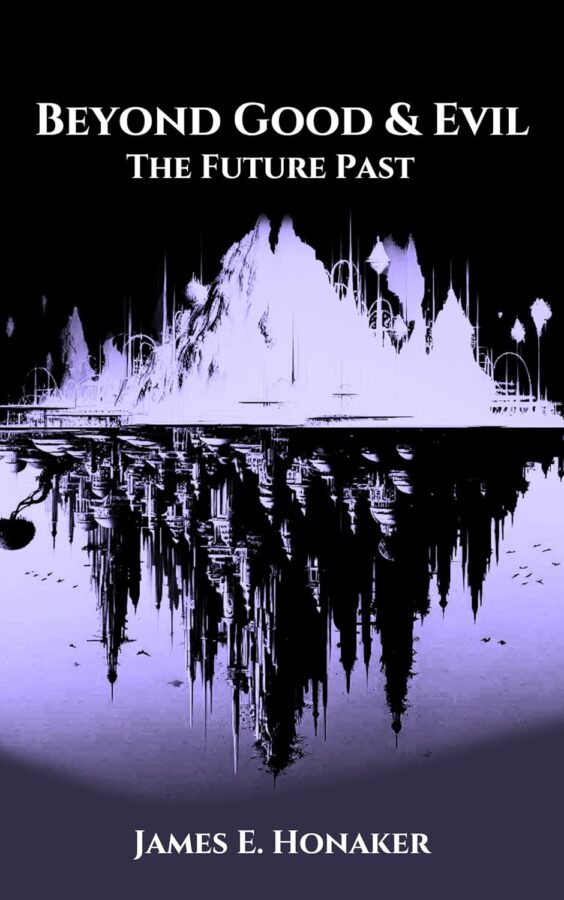Genre: Fantasy, LGBTQ
Reviewer: Ulysses
Get It At Amazon
About The Book
The sun dims, shadows grow, and ruination draws near.
The Tomb of the Almighty, thought to be the home of a divine presence, was opened, and it has unleashed a ruinous presence back upon the world keen on resuming a conquest interrupted. The shadows have spilled forth, destroying the sky city of Aracoras and wrapping their tendrils around the sky city of Lunaria and trying to subjugate the rest of the lands above the cloud sea.
Venser, son of the late High Priest of Aracoras, escaped the fate suffered by the rest of Aracoras, but he found himself in a deep sleep, passing out after seemingly dormant powers awakened to save him and his friends during their escape.
As Venser returns to the world of the living, he and his friends, the crew of the airship Naglfar, race to find the answers they need to stop a dark god from subjugating them all. His journey brings him back to faces old and new, and deeper into the arms of his weapons operator boyfriend, Basch. It’s a race to end an impending war before it has a chance to start anew.
The past has a way of haunting the future, and Venser’s about to learn the consequences of decisions made long before.
Warnings: religious trauma (mild)
The Review
Coming into a series for the first time on the second book can be a challenge. I am grateful to James Honaker for his prologue that filled me in on the basics of what transpired before Venser of Aracoras awakens to his new reality.
We are in a world of island-cities that exist above a dense cover of clouds—about which nobody thinks overmuch. We, the readers, know from the prologue that there is another world below those clouds (presumably a planet?) that was lost to darkness a long, long time ago—longer, indeed, than anyone living in the island cities knows anything about.
People travel around this world on airships, which I quickly realized are steampunk-like dirigibles. Up until the wedding planned on Aracoras for Venser, eighth son of the high priest, and Leondra, daughter of the supreme ruler of the island city of Lunaria, these island cities existed in a reality based on trade, tourism and politics. However, as we learn right away, something went wrong during the wedding, when the long-heralded opening of the Tomb of the Almighty unleashed not a benevolent deity, but an evil darkness.
Somehow Venser, the reluctant groom, discovered within himself a power that stopped the evil darkness long enough to allow some people—including himself—to escape from Aracoras, which now lies in ruins. Venser falls into a coma, from which he awakes at the moment this book starts.
That’s a lot of backstory, but the author wastes no time in pulling the reader (even the ignorant reader like myself) into the narrative as it moves forward with increasing speed. Venser is joined by his boyfriend Basch (which explains in part why he was a reluctant bridegroom) and meets up with his friends Matthias, Sebastian and Arycelle, the doughty crew of the airship Naglfar (which name is taken from Norse mythology).
This team of young people set out to determine just what happened on Aracoras, why Venser fell into a coma, and exactly what it was he did to repel Ak-Tar, the evil darkness that was supposed to be a heroic god. It’s a fascinating story, quest-like in that way of fantasies, but also a bit detective-story-like as Venser and his friends seek for clues to explain the many things nobody seems to understand about what happened at the wedding.
Honaker tells the tale with great relish, all the while introducing the reader to an ever-widening cast of interrelated characters, and letting us get a better understanding of this world of islands resting above the clouds (which reminded me of the Sky City ruled by King Vulcan in the Flash Gordon movies of my childhood).
I will note that Honaker’s prose made me feel old, in its possibly ironic mixture of elegant, old-fashioned “quest language” and what seems to be gen-Z slang. The tonal shifts from serious to bawdy (there’s a whole story thread related to smutty magazines that kept me wondering) were more distracting to me than they would be to what I suspect is the author’s intended audience. But this didn’t keep me from enjoying the story and feeling the excitement as Venser and Basch work their way toward understanding and achievement. I can’t give away any more, because the fun of this is absorbing the details as they are revealed or remembered.
There is another book out there, as the epilogue makes clear. That epilogue raised all sorts of questions I was asking myself all along—but which apparently hadn’t occurred to anybody else until the explosive finale. Now I really want to know more—which I suspect was the point all along.
4 stars.
The Reviewer
Ulysses Grant Dietz grew up in Syracuse, New York, where his Leave It to Beaver life was enlivened by his fascination with vampires, from Bela Lugosi to Barnabas Collins. He studied French at Yale, and was trained to be a museum curator at the University of Delaware. A curator since 1980, Ulysses has never stopped writing fiction for the sheer pleasure of it. He created the character of Desmond Beckwith in 1988 as his personal response to Anne Rice’s landmark novels. Alyson Books released his first novel, Desmond, in 1998. Vampire in Suburbia, the sequel to Desmond, is his second novel.
Ulysses lives in suburban New Jersey with his husband of over 41 years and their two almost-grown children.
By the way, the name Ulysses was not his parents’ idea of a joke: he is a great-great grandson of Ulysses S. Grant, and his mother was the President’s last living great-grandchild. Every year on April 27 he gives a speech at Grant’s Tomb in New York City.


